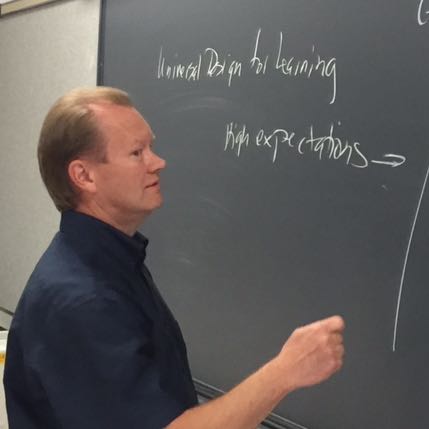by Chris Lanterman, lecturer, doctoral student and co-chair of NAU’s Commission on Disability Access and Design
Twenty-five years ago, George H. W. Bush signed into law the Americans with Disabilities Act, opening doors of possibility for nearly one in five Americans who have a disability. Since that time, individuals with disabilities have gained greater access and participation in employment, spaces, information, services, voting and many other facets of daily life.
Students, staff, faculty and visitors at Northern Arizona University enjoy accessible facilities, programming and technology as a result of the provisions set forth in the ADA and through the efforts of Disability Resources and the Office of Affirmative Action and Equal Opportunity.
Disability is recognized as a valued aspect of diversity, broadly defined, and is represented by the Commission on Disability Access and Design within the Office of the President. The experience of individuals with disabilities is captured through curriculum in the disability studies minor and its expanding presence in other disciplines across campus.
Around the nation, individuals with disabilities find that some of these doors of possibility now open automatically, while others open narrowly or not at all. Attitudinal barriers continue to be one of the greatest obstacles still facing disabled Americans a quarter century after the passage of the ADA. Attitudinal barriers result from misunderstanding, stigma and ignorance of the disability experience.
Disability comes in many forms and many degrees. It affects people of all ages, races, nationalities and incomes. Disability will reach each one of us personally, through a family member, a friend or a colleague. So, it is incumbent upon each of us to recognize disability for what it is, a natural part of the human experience, and to understand and embrace the similarities and differences that individuals with disabilities share with each of us.
Going forward, the elimination of attitudinal barriers goes a long way in reaching the full intent of the Americans with Disabilities Act, and in ensuring we have a diverse, accessible environment that is truly inclusive.



